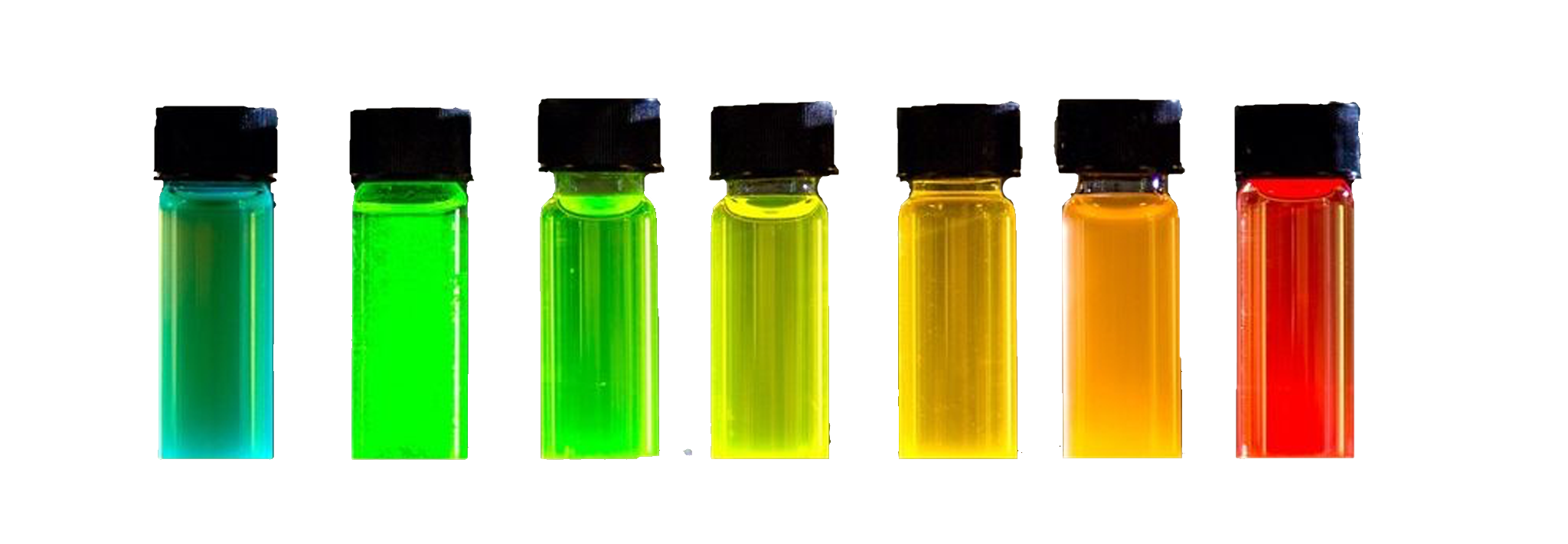Quantum Dots Technology

Quantum dots (QDs) are tiny particles of a semiconducting material with diameters in the range of 2-10 nanometers (10-50 atoms). They were first discovered in the 1980s, but found an application in medicine only in recent years. Quantum dots display unique optical properties, combining high brightness and several distinctive colours. These features make quantum dots particularly suited to be used in sensing and imaging. More information on quantum dots can be found in the Learning Centre of our store LateralFlows.com.
Radetec Diagnostic commercialise reagents and equipment for rapid tests development through its website LateralFlows.com .
Our quantum dots technology can be licensed to third parties, to be integrated in their products.
Application of quantum dots in lateral flow assays
The critical part of Lateral Flow Assays (LFAs) is the conjugation chemistry between a label and a disease-specific antibody, which provides the source of sensitivity. The existing and most widely used label is colloidal gold, however a high concentration of gold-antibody conjugates is required for effective testing. As a consequence, colloidal gold-based tests present two main disadvantages:
Large amounts of antibodies are required, which translate to higher cost to produce the test kits;
Colloidal gold cannot detect early stage infections, characterised by a low pathogen load, which translate into poor clinical sensitivity
A step forward in improving LFA tests is to replace colloidal gold with QDs, which allows for the reading of a fluorescence signal in the presence of pathogens. Fluorescence-based detection is extremely sensitive, that allows the detection of just few pathogens in the sample. Further, a fluorescence-based detection method offers a wider dynamic range than colloidal gold, and provides the possibility of quantitative detection, which allows the clinician to estimate the stage of an infection, hence providing more informed treatment decision-making on the spot, leading to improved economic and social outcomes.
QDs-based tests effectively address the limitations of colloidal gold. QDs generate very bright fluorescence (brighter than other fluorescence molecules), meaning that a lower amount of QD-antibody is necessary to generate a signal. This high brightness also allows the detection of lower concentration of pathogens, enabling early diagnosis and treatment with substantial healthcare cost savings.
Radetec Diagnostics developed and patented a world-first technique to produce highly-fluorescent quantum dots stable in buffers, which can be linked to several biologically-active molecules (e.g. antibodies). Radetec’s QDs are then combined with conventional LFAs to produce vastly more sensitive tests (10-100 times increase in sensitivity compared to existing gold nanoparticle technology). Combined with the LFA existing advantages of simplicity, short assay time (results within 10 min) and affordability (reduce existing costs by upwards of 50%), Radetec can make world-leading test kits for the detection of several pathogens and biomarkers. First examples of diagnostic kits based on Radetec’s QDs are our rapid tests for Human and Animal Sexually Transmitted Infections .
